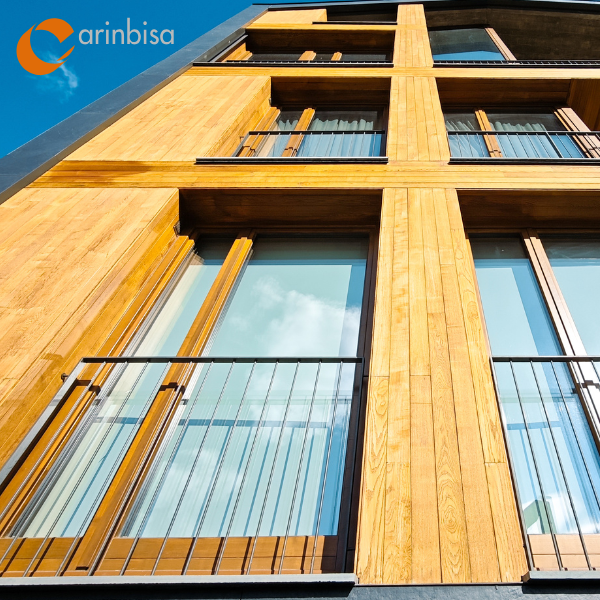Isard Homes in El Tarter, Andorra: High-Performance V92 Timber Windows
Isard Homes in El Tarter (Andorra) features V92 high-performance timber windows designed for extreme alpine climates, offering maximum insulation and durability.

The CTE (Technical Building Code) is the Spanish regulation that defines how buildings must be constructed to ensure safety, efficiency, and sustainability. In this context, windows are not just another element — they are crucial for thermal insulation, energy efficiency, and interior comfort. At Carinbisa, we manufacture wooden and wood-aluminium hybrid windows that not only meet these demanding standards — they exceed them by far. Because complying with the law is not enough: we aim for every window we design to actively contribute to the well-being and energy savings of the people who live and work in these spaces. Absolutely — and with excellent performance. Our windows with low-emissivity double glazing achieve a thermal transmittance of U ≤ 1.5 W/m²·K, easily surpassing CTE requirements in all climate zones: Thermal demands vary — Cádiz is not the same as Burgos. With Carinbisa windows, we ensure maximum thermal comfort and regulatory compliance across all zones. As for the CTE DB-HR acoustic requirements, we achieve a sound reduction index of Rw (C; Ctr): 50 (‑1; ‑4), allowing us to tailor glazing based on the acoustic map of each project (traffic, airports, etc.). Put simply: it’s the amount of heat a window lets escape. The lower the U-value, the better the insulation and the less energy is lost in winter — or excess heat gained in summer. It’s a key indicator for regulatory compliance and a technical priority at Carinbisa. That’s why all our windows are designed with low thermal transmittance in mind, using optimized profiles and natural materials that enhance insulation without compromising design. The DJ68 series — one of our most versatile and widely used — features a U-value of 1.5 W/m²·K in its standard version with low-emissivity double glazing. And there’s more: with triple glazing, optimized hardware, and improved seals, we achieve U-values below 0.8 W/m²·K, easily complying even in the most demanding climate zones. The result is clear: improved comfort, greater energy savings… and happier customers. The RITE (Regulation on Thermal Installations in Buildings) complements the CTE by focusing on the energy consumption of thermal systems. It doesn’t regulate windows directly, but it requires the entire building envelope (walls, enclosures, windows) to contribute to energy efficiency. This is where Carinbisa adds value: our laminated wood joinery, water-based varnishes, double or triple seals, and thermal bridge-minimizing designs help reduce the need for heating or cooling. The result? A more comfortable indoor environment, lower energy bills, and a smaller environmental footprint. This reflects our technical, environmental, and user-comfort commitment. Technology matters — but so does soul. And that’s where wood shines. Carinbisa is present in both contemporary projects and heritage restorations, for example: Best of all: we do it without sacrificing aesthetics, authenticity, or character. With Carinbisa, windows are not just openings in a wall — they are thermal barriers, acoustic shields, and pieces of natural design. Ready to comply, exceed… and inspire.What is the CTE and Why Does it Matter to Carinbisa?
Do Carinbisa Windows Comply with the CTE regulations?
What Is Thermal Transmittance (U-Value)?
What U-Values Do DJ68 Windows Offer?
What Does RITE Say and How Does It Relate to Our Windows?
What Certifications Do Carinbisa Windows Hold?
Why Is Wood Still the Best Choice for Your Windows?
How Do Our Windows Perform in New Builds or Renovation Projects?
Isard Homes in El Tarter (Andorra) features V92 high-performance timber windows designed for extreme alpine climates, offering maximum insulation and durability.
Renovation of the Corral de Don Diego with wooden windows in Toledo, manufactured in laminated pine and combining energy efficiency with full respect for architectural heritage.
Restoration of wooden windows in a historic building in Madrid’s Salamanca district. Exterior carpentry project featuring laminated pine, acoustic glass, and two-tone finishes for maximum efficiency and elegance.